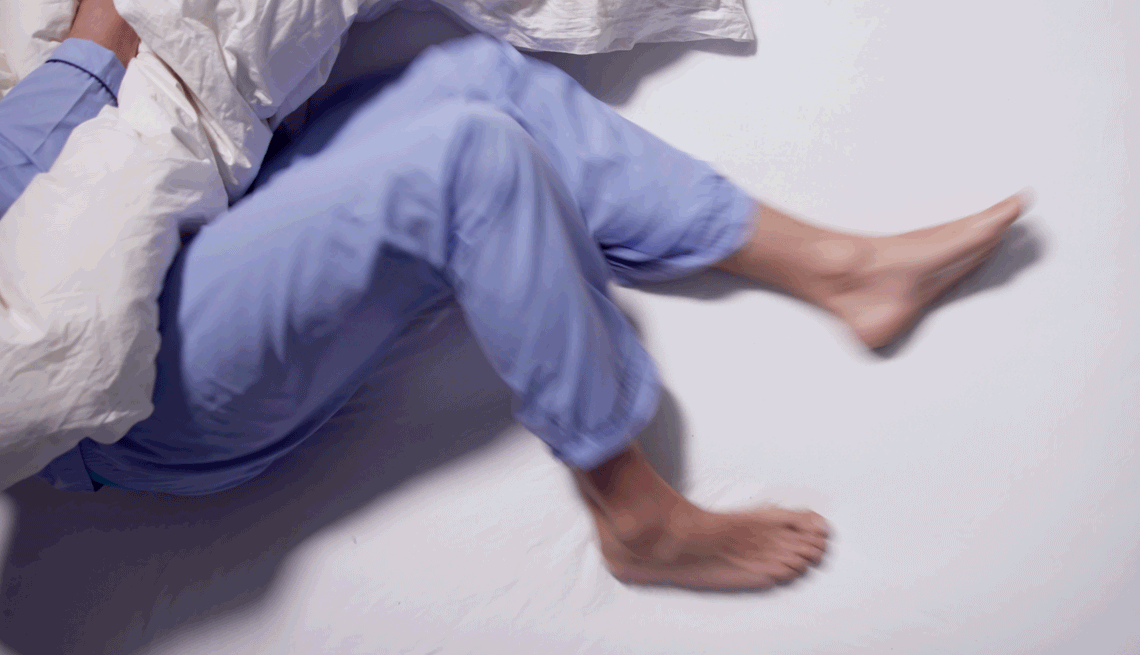AARP Hearing Center


Key takeaways
- RLS is a disorder that causes you to move one or both legs, usually at night.
- Symptoms of RLS improve when you’re walking or stretching your legs.
- Genetics is a common cause of RLS, but a brain iron deficiency can also play a role.
- There’s no medical test for RLS, which means it’s often misdiagnosed.
- New guidelines for treating RLS were released in early 2025.
Restless legs syndrome (RLS), also known as Willis-Ekbom disease, is a neurological sleep disorder that causes an overwhelming urge to move your legs. It also triggers sensations in your legs that can be uncomfortable and difficult to describe.
Both typically get worse when you’re resting or inactive, so the symptoms of RLS are particularly bad when you’re trying to sleep. Although it’s often misdiagnosed, RLS affects up to 10 percent of adults over age 65, and new guidelines released in early 2025 are reshaping how doctors treat it.
What is restless legs syndrome?
“RLS is a neurological disorder that affects sleep,” says Dr. John Winkelman, an RLS specialist and chief of the Sleep Disorders Clinical Research Program at Massachusetts General Hospital. He uses the URGE acronym when describing RLS:
- U = Urge to move your legs, associated with an uncomfortable feeling in your legs.
- R = Resting , whether sleeping or just sitting down, is when RLS symptoms are the worst.
- G = Gets better with movement, like walking or stretching, but the discomfort reappears when you rest again.
- E = Evenings are when you need to move your legs the most.
RLS can show up at any age, though it’s more common as you get older.
In a 2024 survey on sleep disorders by the American Academy of Sleep Medicine, 13 percent of respondents between 55 and 64 said they’d been diagnosed with RLS, while 6 percent over age 65 reported having an RLS diagnosis. Women are more likely to have RLS than men.
Symptoms of RLS
The main symptom of RLS is the need to move your legs. But it also causes feelings inside your legs, not on your skin. “So it’s not joint pain. It’s really a difficult to describe sensation,” says Dr. Rachel Salas, assistant medical director at the Johns Hopkins Center for Sleep and Wellness.
“Sometimes people will say, ‘It feels like bugs are crawling in my legs or on my legs.’ They’ll say, like, maybe it feels like soda or soda pop, or something is fizzing in their blood vessels,” Salas says.
People also to describe this feeling as:
- Crawling
- Creeping
- Throbbing
- Aching
- Itching
- Electric
- Bubbling
You may notice that these symptoms get better and then worse again. They might even go away entirely, only to come back.
Insomnia is a major symptom of RLS. “What makes it a sleep disorder is that it has a circadian component, meaning that the symptoms either only come on in the evening or at bedtime,” Salas says. Walking or moving can make the sensations subside, but they come back as soon as you try to go back asleep again.
If you do get to sleep, RLS can wake you up. That’s how RLS can cause insomnia, Salas says.
This cycle of lack of sleep and discomfort in your legs may cause you to experience:
- Mood swings
- Fatigue or exhaustion
- Difficulty concentrating
- Problems with memory
- Depression and anxiety




































































More From AARP
Poor Sleep? Check for These Health Issues
Trouble sleeping can signal serious problemsTips to Improve Sleep for People 50-Plus
Strategies for restful nights for people 50-plus10 Medications That Can Mess With Your Sleep
Trouble sleeping? These drugs may be to blame